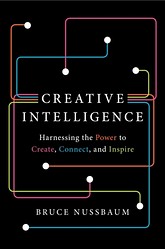CREATIVE INTELLIGENCE
-
How to Frame the Tea Party–The Nullifier Party
We’re all trying to make sense of the wreck in Congress that cost $22 billion and achieved nothing. We tend to think of the destructive Tea Party as an aberration–a minority within a minority. But Frank Rich this week reminded me of one of the most important Creative Competencies in Creative Intelligence–the power of Framing and Reframing.
http://nymag.com/news/frank-rich/government-shutdowns-2013-10/
Nullifying The Affordable Care Act, passed by Congress, the Supreme Court and the reelection of President Obama by a strong majority of the popular vote, was the first and most important reason for the Tea Party shutting down the government and threatening international debt default. But this policy of nullifying laws started with the Nullifier Party in South Carolina in the 1830’s, The Nullifier Party said that federal laws should not be enforced inside South Carolina–a forerunner of State Rights laws that proclaimed the same thing. In the 1830’s, the South tried to stop a tariff that protected Northern industries and raised the price of imports into the south. Today, it is the South and West that objects to extending Medicaid to the poor and mandating people buy health insurance.
Nuffliers put into place Jim Crow voting laws at the end of the Civil War that nullified the right to vote for ex-slaves. Today, Nullifiers are doing the same with new Voter ID laws in the South and West.
Nullifiers are also nullifying the law that gives women the right to have an abortion. It may be the law of the land but it is being gradually eroded in conservative states everywhere.
During the last government shutdown in 1994, Nullifiers tried to nullify the election of Bill Clinton. These past two weeks, Nullifiers tried to nullify the election of Barack Obama.
Not accepting the will of the majority goes deep in American politics. It runs along ancient social, cultural and political fault lines that cleaved in the Civil War and have never been repaired.
Reframing the Tea Party as the Nullifier Party gives us the context and meaning to understand just what happen in Washington over the past two weeks. It shows us that negotiation and compromise is impossible. Like the Civil War, nullifiers have to defeated.
-
10 Fast Ways to Make Yourself More Creative
I just came across a Wall Street Journal piece that I wrote for their online Speakeasy column when my book, Creative Intelligence, came out. It’s one of my best pieces. I especially like the “10 Fast Ways to Boost Your Creativity.”
10 Fast Ways to Boost Your Creative Intelligence
1) Find a creative friend. The social aspect of creativity cannot be underestimated. Spending time with creative peers can boost your energy and help you identify your own creative skills.
2) Map your creativity. Keep a daily journal about the places and activities that inspire you. Add something new one every month. Just changing the way you go to work every day can help.
3) Go for a long walk–or run or bike ride. Give yourself “zone-out” time to let your mind integrate all the new ideas you’re taking in. Creativity is social but still requires “alone time” too.
4) Conduct a “creativity audit.” Take a weekend to think about the knowledge and skills you have that you might be underutilizing. Dive deep into yourself. Bring a close friend to help.
5) Play the “reframe game.” Is your business or industry stagnating? Change the conventional wisdom about the way things have always been done and create something entirely new by connecting two previously unrelated ideas.
6) Find a wanderer. In their heyday, the labs at HP were hugely creative thanks to the founders’ policy of “managing by wandering around.” They choose promising research and championed it. Seek out the person at your organization who can help you bring your ideas into the world.
7) Become a wanderer. Find out what your colleagues and employees are thinking about and ask yourself: how can you help support their ideas? Can you become the person who makes things happen, whether by partnering with them or hooking them up with the right people?
8) Slow down. The rise in social media has left many of us longing for deeper, more meaningful experiences and engagements. There is an increasing need for people and organizations who can devise ways to help people simplify their lives.

9) Venture past the possible. We are often so accustomed to seeing things in a certain way that we’re blind to the possibility of something we can’t yet imagine. Set aside time each week to think about why things are the way they are, and imagine them differently.
10) Embrace uncertainty . There is so much change in our lives and in our work that it scares us, even paralyzes us. Yet uncertainty offers the greatest opportunities. With the right creative skills, you can make uncertainty a place of discovery for you.
http://blogs.wsj.com/speakeasy/2013/03/11/how-to-become-the-creative-employee-of-the-month/
Explore these sites
- Non Gamstop Casinos
- Migliori Casino Online
- Non Aams Casino 2025
- Non Gamstop Casinos
- New Betting Sites UK
- Casinos Not On Gamstop
- Casinos Not On Gamstop
- Non Gamstop Casino
- Non Gamstop Casinos UK
- Non Gamstop Casino UK
- Non Gamstop Casino UK
- UK Casino Not On Gamstop
- Meilleur Casino En Ligne
- Non Gamstop Casinos UK
- 信用 できるオンラインカジノ
- Non Gamstop Casino Sites UK
- Migliori Siti Casino Non Aams
- Casino Sites UK
- Sites Not On Gamstop
- Best Non Gamstop Casinos
- Beste Online Casino Nederland
- Non Gamstop Casinos UK
- Casino Non Aams
- Non Gamstop Casinos UK
- Casino Online Non Aams
- Casino En Ligne
- Casino Non Aams
- ライブカジノ ブラックジャック